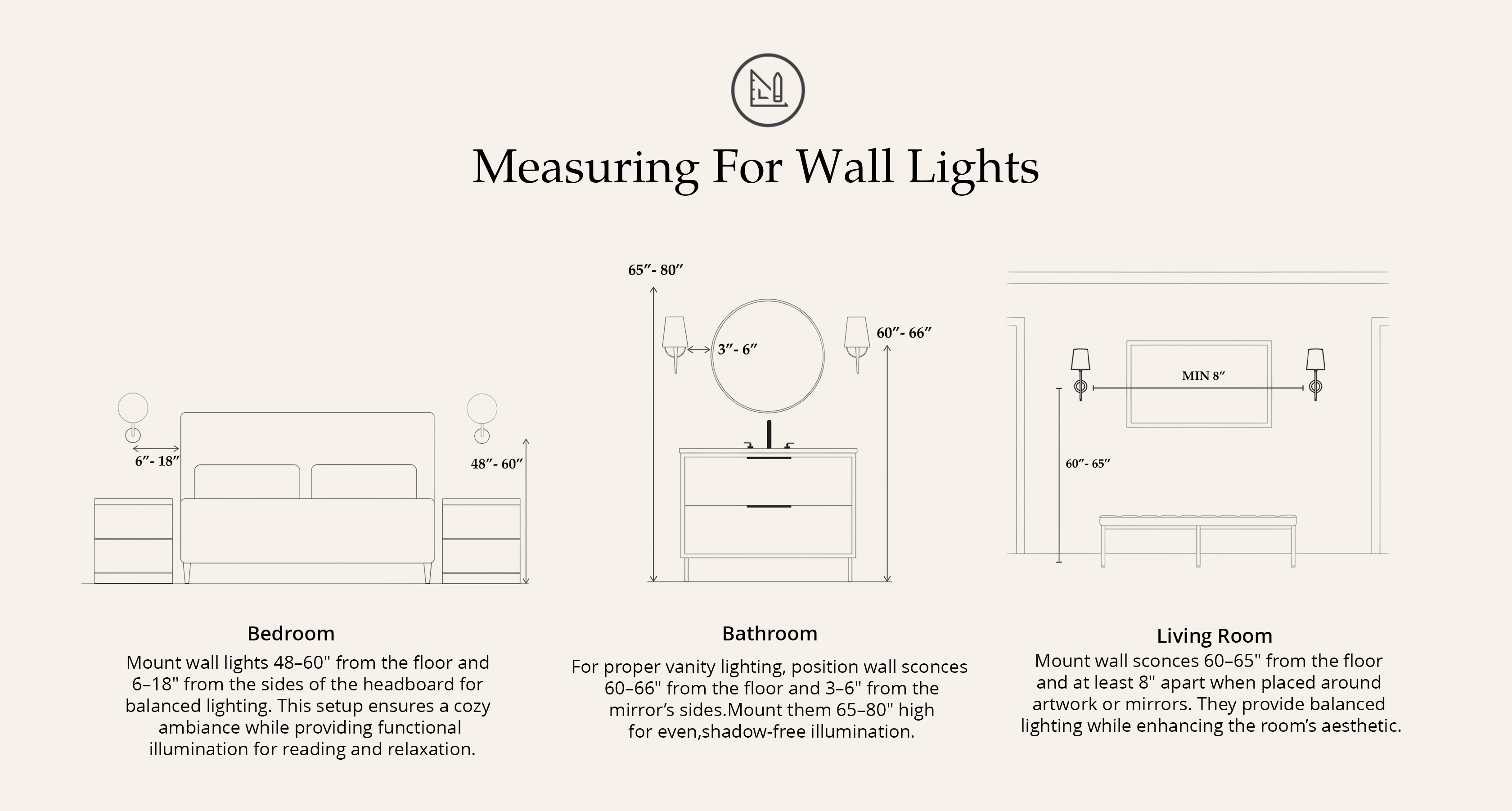Joy of Light Modern Grey Glass & Metal Wall Lamp
See Product Details
| Holder Type | E14 |
|---|---|
| Weight | 1050 GM |
| Product Category | Lamps & Lighting |
| Dimensions | 20 X 13 X 24 CM |
| Color | Gold, Grey |
| Material | Metal, Glass |
| Product Includes | 1 Wall Light |
| Number of Lights | 2 |
| Light Bulb Included | No |
| Cord Included | No |
| Shipping | Product can be shipped across India |
| Country of Manufacture | China |
FAQs
What is the best way to position a wall light for maximum effect?
To achieve optimal lighting, place wall lights at a height that allows them to effectively illuminate the desired area. For ambient lighting, place them higher up on the wall, and for task lighting, install them closer to the area that needs more focus, such as beside a reading chair.
Do these types of wall lights get hot?
While most modern wall lights, especially those with LED bulbs, remain cool to the touch, it's essential to ensure the fixture is rated for heat resistance. Older fixtures or those with higher-wattage bulbs may get warmer, so it's important to follow installation instructions for safety.
What is the difference between a wall light and a ceiling light?
Wall lights are mounted on the walls, offering more focused illumination and serving as decorative features. Ceiling lights, on the other hand, provide general overhead lighting that illuminates the entire room. Wall lights tend to be used for accent or task lighting, while ceiling lights are often used for ambient lighting.
What color temperatures are available for wall lights?
Wall lights come in a variety of color temperatures, ranging from warm white (2,700K) to cool white (5,000K) and daylight (6,500K). The best color temperature depends on the atmosphere you're aiming to create. Warm white is often used for cozy environments, while cool white or daylight is ideal for task lighting.
Can wall lights be used in both indoor and outdoor settings?
Some wall lights are designed for both indoor and outdoor use. However, outdoor wall lights should be rated for weather resistance and should have a high IP (Ingress Protection) rating to protect against water, dust, and extreme temperatures.
How do I know if a wall light is suitable for my decor?
Choose a wall light that complements the style and color scheme of your room. Modern fixtures with sleek finishes work well in contemporary settings, while more intricate designs may be suitable for traditional or eclectic decor. Pay attention to the material, color, and shape of the fixture to ensure it matches the rest of your interior.
What wattage is suitable for wall lights in living rooms?
For living rooms, wall lights typically range from 5 to 15 watts if using LED bulbs. This wattage is usually sufficient to provide accent lighting or soft illumination. For brighter task lighting, higher wattage or additional light sources may be required, especially if the room has darker decor or larger dimensions.
Key Features
Discover the charm of the Joy of Light Modern Grey Glass & Metal Wall Lamp, an epitome of sophistication and style:
Elegant Design: Sleek combination of glass and metal, creating a sophisticated look.
Warm Ambiance: Provides a warm and inviting ambiance, perfect for creating a cozy atmosphere.
Dimensions: Compact and stylish at 20 x 13 x 24 cm.
Perfect for Bedrooms and Living Rooms: Enhance your space with this exquisite wall-mounted lighting.
Color: Available in a chic Gold and Grey finish.
Disclaimer
Country of Origin: PRC
Imported, Packed and Marketed By: Whispering Homes Private Limited. 878 C, Ground Floor, JLPL, Sector 82, Mohali, SAS Nagar, Punjab
Return & Refund Policy
- For Return & Refund Policy Click Here
- In case any product is received damaged, an unboxing video of the delivered original package would be required within 24 hours for any replacement.
- Prices mentioned are MRP (inclusive of all taxes).
- All products are handcrafted and hand-finished; the actual finish may vary slightly and there could be slight imperfections.
-
The warranty for Whispering Homes lights and decor excludes coverage for:
- Normal wear and tear
- Misuse, abuse, unauthorized alterations or modifications
- Accidental damage
- Exposure to extreme environmental conditions
- Improper installation
- Specific components such as light bulbs or batteries
For any other queries, contact customer support .
Explore Bestsellers From This Category

Hot Picks Right Now
Fresh Designs You’ll Want First
See Coordinated Pieces from the Same Series
Discover Popular Collections

Joy of Light Modern Grey Glass & Metal Wall Lamp







